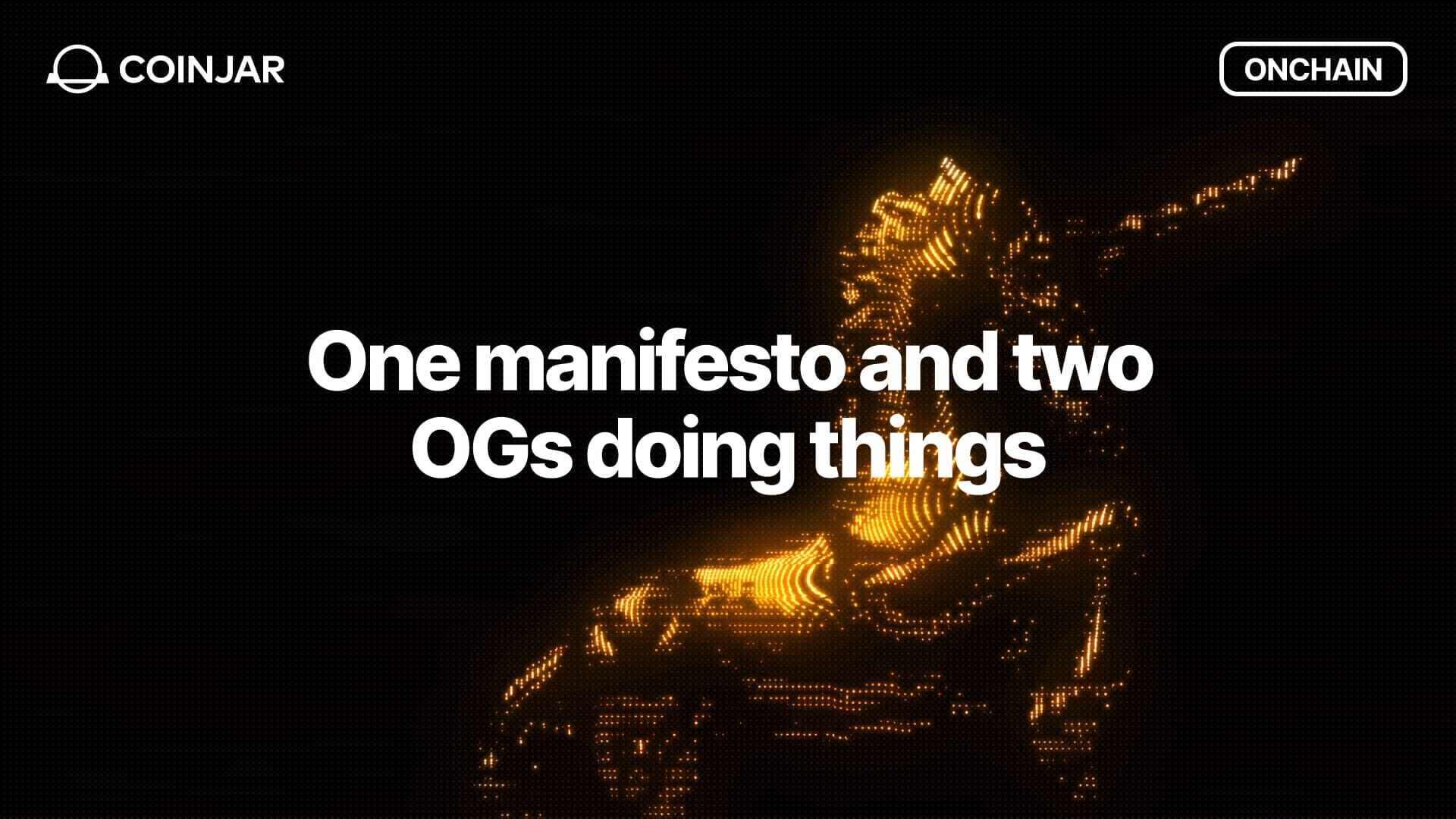Get $20 in free Bitcoin when you sign up and buy $50+ in crypto before January 31, 2026. Terms apply.
The Eye of the Storm
July 14, 2021
Share this:

After the sheer, record-breaking insanity of early 2021, crypto is currently doing, well, nothing. And that’s not the worst thing.
Undeniably, one of cryptocurrency’s biggest draw cards is the sheer, take-no-prisoners volatility of it all. Coins doubling in a day? We call that Tuesday. Losing half their value two days later? Eh, whatcha gonna do?
This is, needless to say, not how markets usually operate. A sensible price target for a top-tier stock might be 20%, with a multi-month window. If something moves more than 5% in a day it’s a Big Deal. The long-term capital gains discount kicks in after you hold a stock for more than a year and that’s usually what you’re aiming for.
But crypto? Crypto is thrilling. It condenses years of traditional market movement into weeks and it exaggerates those movements by a factor of 10. Even if you don’t know what’s going to happen, at least you know it’s going to be unexpected and a little bit ludicrous. It’s a financial market for the internet age, where meaning is measured in minutes and things move or they die.
So, what happens when things stop moving?

Like Pong but worse
In the aftermath of the May collapse, people were instantly calling for a V-shaped recovery to US$55k or a continuation down to US$20k. A couple of weeks later, the targets became US$45k and US$24k. A couple of weeks after that, US$40k and US$28k. Now everyone’s yelling at each other about whether Bitcoin is going to hit US$36k or US$30k first.
Make no mistake, these sorts of markets are almost impossible to trade. In the absence of any true directional momentum, it’s a mess of switchbacks, fakeouts and wholly irrational movements designed to steal the money of the impatient. As crypto enthusiasts, our trigger fingers are constantly itchy. Putting the gun down altogether is a real challenge.
The storm is coming
While there are plenty of hypotheses as to why this is happening and what’s going to happen next, the truth of the matter is pretty simple: nobody knows until it actually happens. But when it does, trade my pretties, trade!
However, as is often the case, price action (or lack thereof) draws all the attention, while the actually important stuff keeps ticking along in the background. Stuff like Ethereum’s forthcoming ‘triple halving’ sequence of upgrades, or Fidelity expanding its staff by 70% due to excess interest from institutional investors, or Paraguay introducing its own Bitcoin bill. Stuff like the Bitcoin mining hash rate recovering as miners find new homes. And DeFi continues expanding at an ever increasing rate, market collapse or not. Remember, bear markets are where bull markets are built.
So, what should you do in the interim? Put down the charts, read a book, take up a hobby. Talk to your loved ones again, apologise for ignoring them from January to May. And set up Dollar Cost Averaging in your CoinJar, so that you keep on buying more crypto week-on-week, irrespective of price.
A year ago the price of 1 Bitcoin was less than US$10k. It’s now more than triple that. All you’ve ever needed to do with crypto is ignore the noise. But that can be the biggest challenge of all.
The above article is not to be read as investment, legal or tax advice and takes no account of particular personal or market circumstances; all readers should seek independent investment, legal and tax advice before investing in cryptocurrencies. This article is provided for general information and educational purposes only. No responsibility or liability is accepted for any errors of fact or omission expressed therein. CoinJar, Inc. makes no representation or warranty of any kind, express or implied, regarding the accuracy, validity, reliability, availability, or completeness of any such information. Past performance is not a reliable indicator of future results.
Share this:
On/Offchain
Your weekly dose of crypto news & opinion.
Join more than 150,000 subscribers to CoinJar's crypto newsletter.
Your information is handled in accordance with CoinJar’s Privacy Policy.
More from CoinJar Blog

Onchain: Welcome to the last month of 2025
December 3, 2025Just when you get used to writing 2025 in communications, it's about to end. You look back and wonder, Where did the time go? Meanwhile, VCs are busy publishing their 2026...Read more
Onchain: One manifesto and two OGs doing things
November 19, 2025Story One Wake up babe, new manifesto dropped Why ship app, when you can write manifestos instead, amirite? Or so the Ethereum Foundation & Co. must have thought as they sat...Read more
Onchain: It's getting dark out there
November 5, 2025Not just because of wintertime and crypto coins going down, but also because bad things keep happening in our industry. Before that, here's one positive sign. Story One x402...Read moreYour information is handled in accordance with CoinJar’s Privacy Policy.
Copyright © 2025 CoinJar, Inc. All rights reserved.
CoinJar, Inc. is a registered Money Services Business with FinCEN and licensed as a money transmitter, NMLS #2492913. For a list of states in which CoinJar, Inc. is licensed or authorized to operate, please visit here. In certain other states, money transmission services are provided by Cross River Bank, Member FDIC.
This site is protected by reCAPTCHA and the Google Privacy Policy and Terms of Service apply.